Discover 7 hidden attractions, cool sights, and unusual things to do in Glamis (United Kingdom). Don't miss out on these must-see attractions: Glamis Castle, Angus Folk Museum, and Glamis Manse Stone. Also, be sure to include Eassie Stone in your itinerary.
Below, you can find the list of the most amazing places you should visit in Glamis (Scotland).
Table of Contents
Glamis Castle
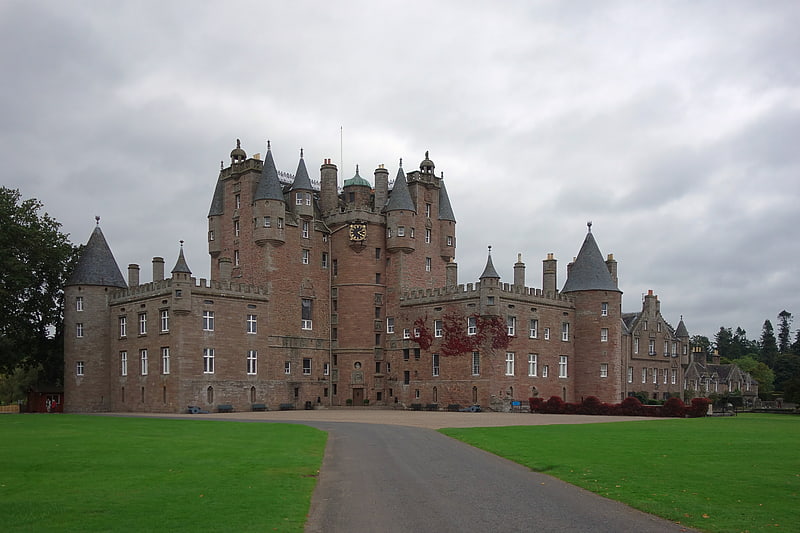
Turreted chateau-style castle. Glamis Castle is situated beside the village of Glamis in Angus, Scotland. It is the home of the Earl of Strathmore and Kinghorne, and is open to the public.
Glamis Castle has been the home of the Lyon family since the 14th century, though the present building dates largely from the 17th century. Glamis was the childhood home of Queen Elizabeth The Queen Mother, wife of George VI. Their second daughter, Princess Margaret, Countess of Snowdon, was born there.
The castle is protected as a category A listed building, and the grounds are included on the Inventory of Gardens and Designed Landscapes in Scotland, the national listing of significant gardens.[1]
Angus Folk Museum
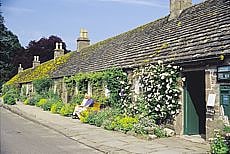
Museum in Glamis, Scotland. Angus Folk Museum was a centre for agricultural history and rural life located near Forfar, Angus. It was located in the village of Glamis off the A94. The museum was founded by Jean, Lady Maitland who gave her collections to the nation in the 1950s. Since 1976 it has been administered by the National Trust for Scotland. The museum has been described as containing "one of Scotland's finest folk collections".
The museum was housed in a terraced row of six cottages built in 1793 and one farm steading. The buildings were given by Timothy Bowes-Lyon, 16th Earl of Strathmore and Kinghorne to house the museum collections.
It was given a 3 star rating by the Scottish Tourist Board.
The museum closed permanently in 2017 due to structural problems discovered in its buildings, and National Trust Scotland are considering alternative homes for the collections.[2]
Glamis Manse Stone

The Glamis Manse Stone, also known as Glamis 2, is a Class II Pictish stone at the village of Glamis, Angus, Scotland. Dating from the 9th century, it is located outside the Manse, close to the parish church. It is inscribed on one side with a Celtic cross and on the other with a variety of Pictish symbols. It is a scheduled monument.[3]
Eassie Stone
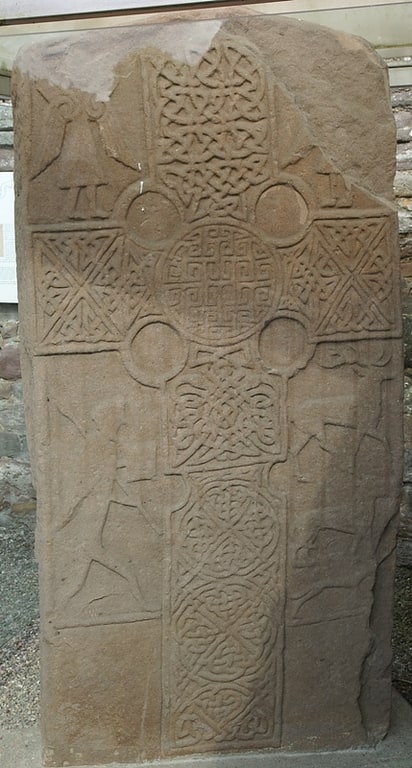
Historical landmark in Scotland. The Eassie Stone is a Class II Pictish stone of about the mid 8th century AD in the village of Eassie, Angus, Scotland. The stone was found in Eassie burn in the late 18th century and now resides in a purpose-built perspex building in the ruined Eassie church.[4]
Hunter's Hill Stone
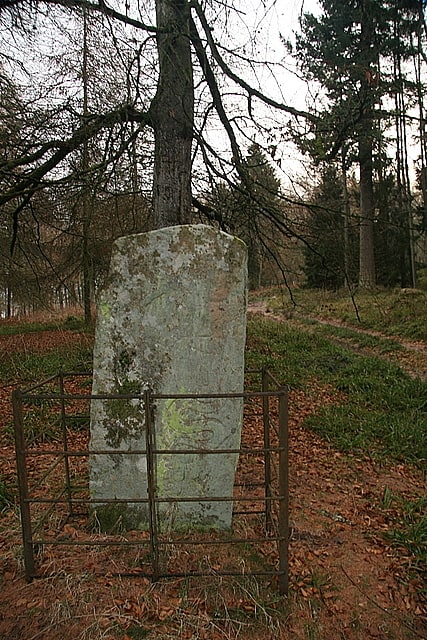
The Hunter's Hill Stone, otherwise known as the Glamis 1 Stone, is a Class II Pictish standing stone at Hunter's Hill to the south east of Glamis village, Angus, Scotland.[5]
Kinnettles Castle
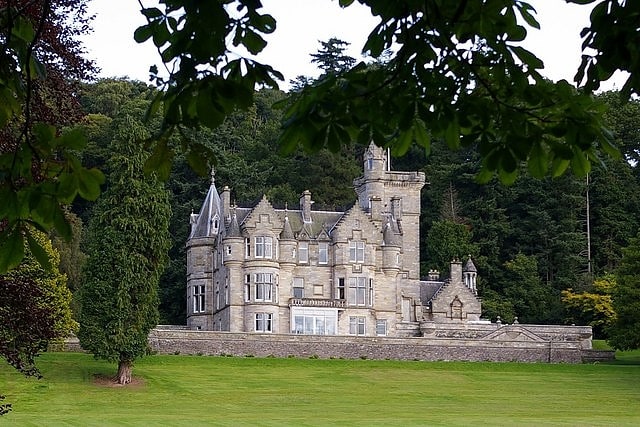
Castle in Kinnettles, Scotland. Kinnettles Castle is a mid-19th century period castle located in Forfar, Angus, Scotland. Set on 44 acres, the Scottish Baronial castle is now a luxury hotel.[6]
St Orland's Stone
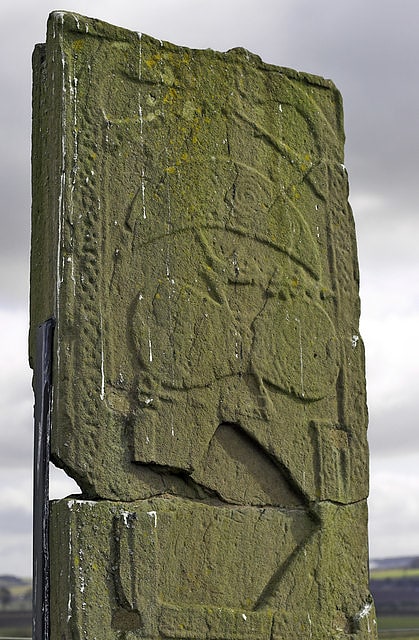
Historical landmark in Scotland. St Orland's Stone is a Class II Pictish Cross-Slab at Cossans, near Kirriemuir and Forfar, Angus, Scotland[7]